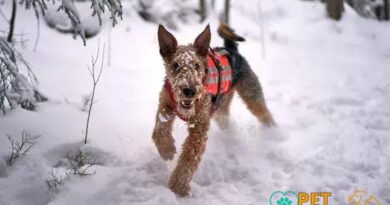What is guard dog training
What is Guard Dog Training?
Guard dog training is a specialized form of obedience training that focuses on teaching dogs to protect their owners and property. This type of training involves instilling a sense of alertness and vigilance in the dog, enabling them to recognize potential threats and respond appropriately. The process typically begins with basic obedience commands, which serve as the foundation for more advanced protective behaviors.
The Importance of Socialization in Guard Dog Training
Socialization is a crucial aspect of guard dog training. It involves exposing the dog to various environments, people, and other animals to ensure they can differentiate between normal situations and potential threats. A well-socialized guard dog is less likely to react aggressively in non-threatening scenarios, making them more effective protectors. This training phase helps build the dog’s confidence and adaptability.
Basic Commands in Guard Dog Training
Before a dog can be trained for protection, they must master basic commands such as sit, stay, come, and heel. These commands are essential for establishing control and ensuring the dog responds to their handler’s cues. Consistent practice and positive reinforcement are key components in teaching these commands, laying the groundwork for more advanced training techniques.
Advanced Training Techniques for Guard Dogs
Once a dog has mastered basic commands, trainers can introduce advanced techniques specific to guard dog training. This may include teaching the dog to bark on command, to alert their owner to intruders, and to engage in controlled aggression when necessary. These techniques require careful handling and a deep understanding of canine behavior to ensure the dog remains balanced and effective in their protective role.
Choosing the Right Breed for Guard Dog Training
Not all dog breeds are suited for guard dog training. Breeds such as German Shepherds, Rottweilers, and Doberman Pinschers are often favored for their protective instincts and trainability. However, individual temperament and personality play significant roles in determining a dog’s suitability for this type of training. Prospective owners should consider these factors when selecting a breed for guard dog training.
Training Environment for Guard Dogs
The training environment is critical in guard dog training. It should be a safe and controlled space where distractions are minimized. Trainers often use a combination of indoor and outdoor settings to simulate real-life scenarios. This varied environment helps the dog learn to focus and respond appropriately to different stimuli, enhancing their protective instincts.
Positive Reinforcement in Guard Dog Training
Positive reinforcement is a fundamental principle in guard dog training. This method involves rewarding desired behaviors with treats, praise, or playtime, encouraging the dog to repeat those behaviors. Positive reinforcement not only strengthens the bond between the dog and handler but also promotes a positive learning experience, making the training process more enjoyable for both parties.
Common Challenges in Guard Dog Training
Training a guard dog can present various challenges, including fear-based aggression, distraction, and inconsistent behavior. Trainers must be patient and adaptable, employing different strategies to address these issues. Understanding canine psychology and behavior is essential for overcoming obstacles and ensuring the dog develops into a reliable protector.
Legal Considerations for Guard Dogs
When training a guard dog, it’s important to be aware of the legal implications surrounding their use. Laws regarding dog aggression, liability, and property protection vary by location. Owners should familiarize themselves with local regulations to ensure they are compliant and to understand their rights and responsibilities as dog owners.
Maintaining Training and Ongoing Education
Guard dog training is not a one-time event; it requires ongoing education and practice. Regular training sessions help reinforce learned behaviors and keep the dog sharp. Additionally, owners should seek out advanced training opportunities and workshops to further develop their dog’s skills and ensure they remain effective protectors throughout their lives.




